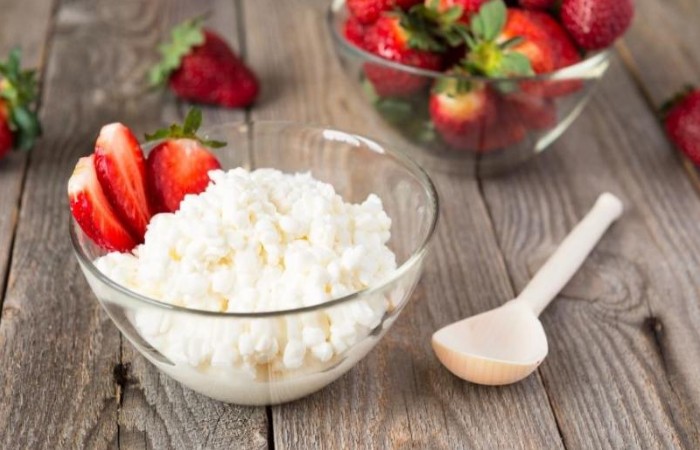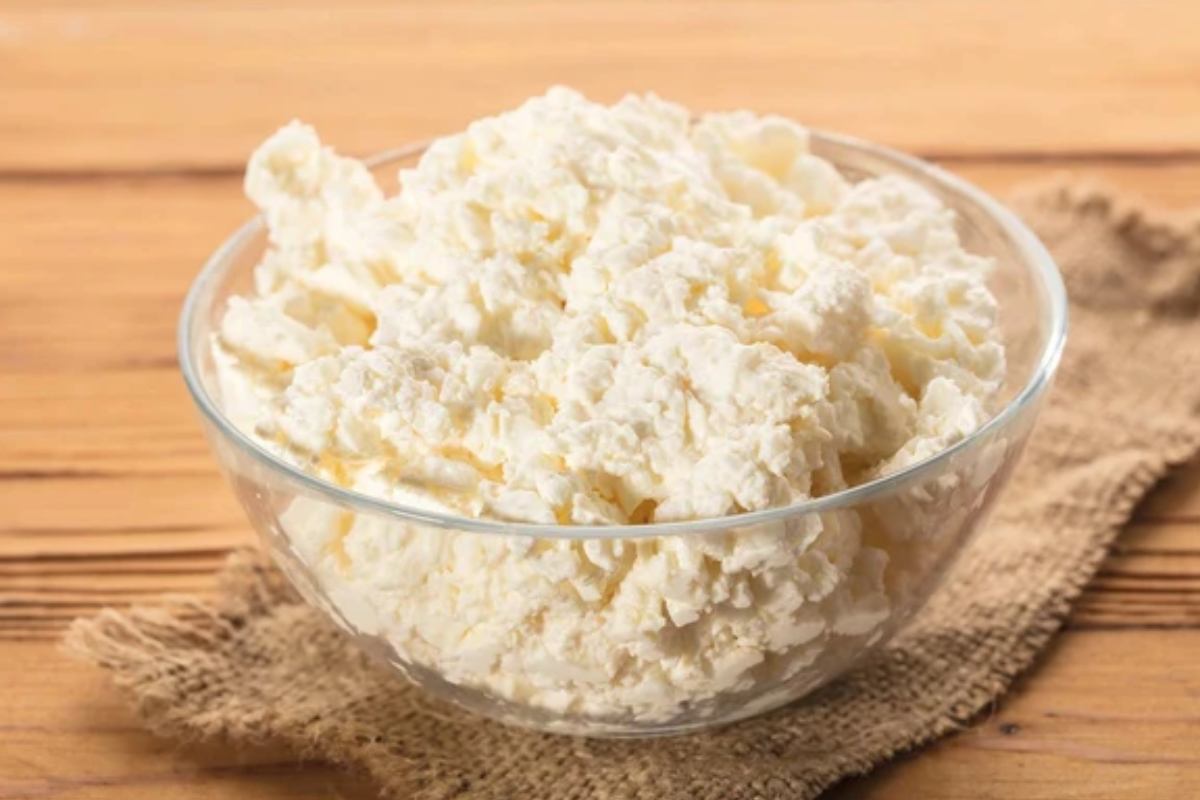What does cottage cheese taste like? It is one of the most unknown foods to humans. When you hear the word cottage cheese ask twice what it is. And it’s also important to note that we can’t find it in all supermarkets. One of the main problems could be that since it is a perishable product, it is not often replaced.
In this post, we can see that cottage cheese is a very healthy food suitable for all ages and gives us extra help in controlling those extra “pounds.” Then, from Aucal, we will reveal some of the properties of cottage cheese.
It is a milky derivative with a mild taste – if it comes from the cow’s whey – with a grainy and rough texture in the mouth. It can be combined with other foods such as salads, vegetables, toast, and sweet or savory recipes. It serves as an ingredient for a “calorie bomb” in desserts, somewhat less in its lighter and healthier variant.
Getting cottage cheese is very simple and can even be made at home. The process consists of fermenting the whey produced during soft cheese production, then heating it to approx. 90 ° C and the milk proteins coagulate into a smooth and soft dough.
Table of Contents
What Nutritional Properties Does Cottage Cheese Provide?

Cottage cheese has the best nutritional profile within the dairy group. Of these, it should emphasize:
- The great source of high biological value proteins, four times that of cow’s milk and twice that of yogurt. This way, all the essential amino acids are present.
- The fat content is lower than that of any cheese.
- It is high in calcium, phosphorus, and potassium.
- It is characterized by vitamin A, folic acid, vitamins B 3 and B 12.
What Are Its Nutritional Benefits And What Does Cottage Cheese Taste Like
“Cottage cheese is a mild-tasting cream cheese curd product made by draining rather than pressing the cheese, which helps retain moisture and some whey. In contrast to other cheese products, it does not undergo any aging process,
And as it is a dairy product, it is full of proteins and many vitamins and minerals.
“Cottage cheese is full of nutrients, including B vitamins like vitamin B12 and calcium,” says Martin. “It’s an excellent source of protein as 1 cup of small cottage cheese contains nearly 25 grams of protein. In addition, the maximum protein in cottage cheese is casein protein, different from whey, which slowly absorbs and helps avoid muscle breakdown. Some brands may even contain probiotics, also known as “friendly gut bacteria that are good for gut health.”
Does The Cottage Cheese Go Bad? How And What Does Cottage Cheese Taste Like If It Is Bad?
What Does Cottage Cheese Taste Like? Like all other dairy products, cottage cheese goes terrible. To check that your cottage cheese is still okay, do the following:
The sniff test: If it smells sour, it is past its prime, and you should probably throw it away. A sour smell (something like sour cream) doesn’t necessarily mean it’s unsafe to eat, but it certainly won’t taste the way it used to. If it smells bad or is strange, throw it away.
Check the texture: When there is a layer of water on top, and the rest is very thick (almost solid), it’s time to go.
Look for mold or other discoloration on the surface. Throw it away if you see any.
It remains open for more than a week, or more than a week has passed since its date. If that’s the case, leave it.
How To Store Cottage Cheese and What Does Cottage Cheese Taste Like when Refrigerated?
Store cottage cheese in the refrigerator, possibly in the far corner and not by the refrigerator door. After opening the container, seal the leftovers tightly and put them in the refrigerator as soon as possible.
Like almost any dairy product (e.g., cheese spread or cream cheese), you should keep cottage cheese in the refrigerator.
To keep this specialty milk fresher longer, leave it to rest in the far corner of the refrigerator. Unfortunately, the temperature of the refrigerator door changes frequently, so it’s not a good place for cottage cheese.
After opening the packaging, seal it tightly before putting it back in the refrigerator.
Since most cream cheeses come in non-resealable plastic containers, you’ll need to find another solution. Transferring the dairy product to an airtight container or putting the original packaging in a freezer bag are two environmentally friendly options.






